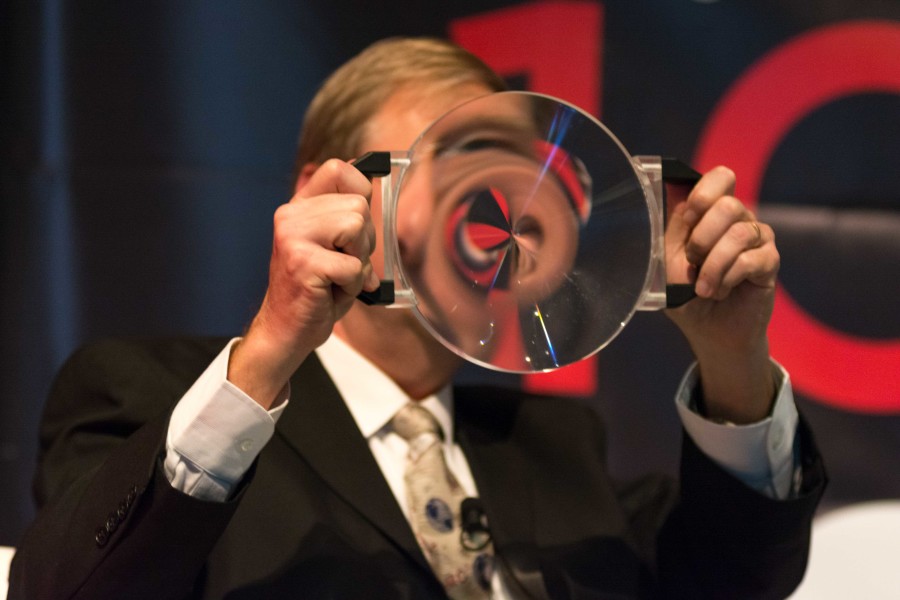TEDx Cleveland celebrates Einstein
The speakers addressed topics like general relativity and black holes, aiming to make them accessible to all audience members.
Nov. 20, 2015 was the 100th anniversary of Albert Einstein’s theory of relativity. To celebrate, this region had its first TEDxCleSalon program, held at the Tinkham Veale University Center at Case Western Reserve University.
“It was 100 years ago, November 1915, that Einstein made a series of presentations to the Prussian Academy of Science,” said Dan Moulthrop, host and CEO of The City Club of Cleveland. “What he presented then formed the basis of what we’ve come to know as general relativity.”
The day included a series of talks and salon-style breakout sessions where the audience members had a chance to discuss the topics with the speakers themselves.
The program began with a discussion and Q&A session on the theory of relativity with Evalyn Gates, astrophysicist and CEO of the Cleveland Museum of Natural History, and Cyrus Taylor, dean of the College of Arts and Sciences at CWRU. They began with general relativity.
General relativity is an observed effect of gravity between masses that results from a warping of space and time. Along with that, special relativity is the theory that the laws of physics are identical in all systems and that the speed of light in a vacuum is the same for all observers, regardless of the motion of the light source.
“Einstein was a deep thinker,” said Gates. “He wasn’t out there conducting experiments. Physicists tend to be lazy. We take the easy things first, so special relativity was the easy part; he could understand light. But once you throw gravity into the mix that was something that, quite frankly, we’re still struggling to understand at a really deep level today, how gravity really works.”
Einstein developed general relativity when he saw inconsistencies with the way that Newton’s laws of nature worked with certain phenomena in the universe. With Newtonian physics, the universe’s expansion would have to slow down. This would be similar to someone throwing a ball up in the air, it decelerating at its peak height and then it coming back down to the ground.
However, in reality, the universe is ever-expanding and even increasing its rate of expansion. This is where general relativity comes in. The evolution of this rate of expansion is based off of an equation of state. This is the relationship between temperature, pressure, combined matter, energy and vacuum energy density of any region of space.
Physicists have hypothesized that an unknown form of energy, called dark energy, is causing the acceleration of the expansion of the universe.
Another phenomenon that many people are interested in is the phenomenon of black holes.
One of those people, recipient of the Institute of Physics’ Maxwell Medal, Ruth Gregory, explained black holes in a simple manner.
“[Black holes] have certainly seemed to have captured our imagination,” said Gregory. “From the Muse song, to ‘Interstellar,’ ‘Star Trek,’ they’re practically a staple of science fiction.”
Along with that, scientists have also found them to be extremely fascinating. There are two sides to the black hole. On one hand, it is a tangible, real object that is out there, and on the other hand it is a toy for theorists to play with. A black hole is an object that is big enough and dense enough, with such high gravity, that nothing, not even light, can escape it.
“As a non-physics major, I enjoyed how accessible and understandable it made the tenets of astrophysics,” said fourth-year CWRU student and content associate of The City Club of Cleveland Teddy Eisenberg. “I think any event that promotes the pursuit of knowledge in an open way that encourages civil, civic dialogue is well worth continuing.”
Eisenberg was also involved in organizing the opening panel discussion of the event.
Along with the enriching discussions and talks, the audience also had the opportunity to try a flavor of Mitchell’s ice cream specific to the occasion, the MC2, mint chocolate ice cream with chocolate chips.


